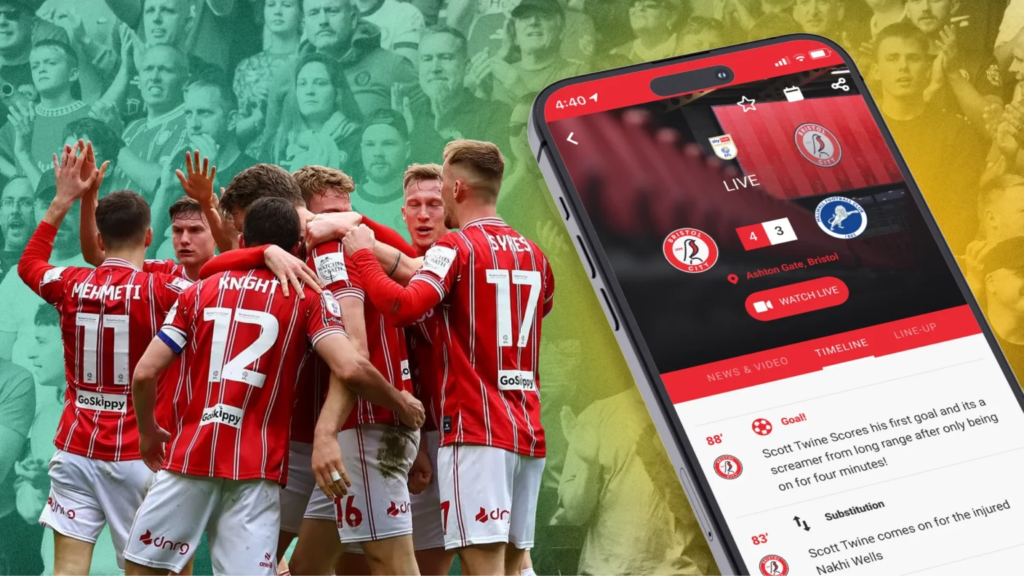Overview: Soccer has always been known for its simplicity; a ball, a pitch, and two goals. But in recent years, it’s become one of the most tech-enhanced sports in the world. From wearable trackers and heat maps to VAR (Video Assistant Referee) and advanced performance analytics, the modern game looks a lot different than it did even a decade ago. Technology now influences how players train, how coaches make decisions, and how fans engage with the sport. While these innovations offer new ways to improve performance and enhance entertainment, they also raise an important question: is all this tech actually making the game better?
Five Photos that Enhance the story:

Photo Via Catapult, Tracking every step: Wearable technology helps players monitor their fitness and performance in real time.

Photos Via Women’s Soccer Coaching, Data-driven decisions: Coaches use cameras and analytics to refine tactics and player positioning.

Photo Via DAZN, Tech in the game: The VAR system ensures accurate refereeing with instant video review.

Photo Via PTSportSuite, A digital fan experience: Supporters engage with live stats and replays via mobile apps and stadium tech.

Photo Via Sporttomorrow The future of soccer: Advanced technology is reshaping how the game is played, coached, and experienced by fans.
Interview with Daniel Franco: Former player and Coach:
Photo Essay:
Photo via Freepik. The modern day soccer field is no longer grass and goal posts; it is now a hub for technology. From offside / goal line technology to wearable GPS and training items the game is evolving. As technology integrates deeper into the sport, the question remains: Is soccer becoming smarter or losing its human touch?
Photo via Adidas News Training is not just sweat and fitness anymore, it’s about data. Tech-driven tools like smart soccer balls, especially the ball used in the 2022 World Cup, GPS trackers, and performance analysis apps help players refine their technique with real-time feedback. Every pass, sprint, and shot is tracked, turning training into a science. But does technology make better athletes, or just better numbers?
Photo Via KINEXON Sports With a quick glance at a smartwatch or tablet, players now have access to detailed performance analytics, speed, stamina, shot accuracy, and more. Tech-driven insights help athletes and coaches make data-backed decisions. But as technology takes a bigger role in self-improvement, does it enhance player intuition or replace it?
Photo Via A-Champs Drills and repetition are now guided by technology. Motion-tracking cameras and training apps analyze every movement, providing instant feedback on form and efficiency. Players no longer rely solely on instinct, they adjust based on data. As technology shapes the way athletes train, is creativity on the field being enhanced or controlled?
Photo Via Actinsports Soccer strategy is no longer just a coach’s intuition, it’s a science. AI-driven analytics break down heatmaps, passing patterns, and opponent tendencies, giving teams a data-backed edge. With technology influencing every tactical decision, is the game becoming more strategic, or are we losing the unpredictable magic of human play?
Photo Via Freepik A coach’s wisdom versus AI’s precision, who knows best? While AI provides instant analysis, traditional coaching relies on experience and intuition. As technology becomes a bigger voice in player development, the balance between human decision-making and machine-driven insights raises a critical question: Is AI an assistant or a replacement?
Photo Via Medium As the sun sets on another day of training, the future of soccer remains uncertain. With AI shaping how athletes train, play, and strategize, the sport is evolving faster than ever. But as technology takes center stage, one question lingers: will the heart of the beautiful game always belong to the players and fans or to the data?
Interactive Element:
Map of my Location:
Link to JRN 272 MAIN FEATURE:




